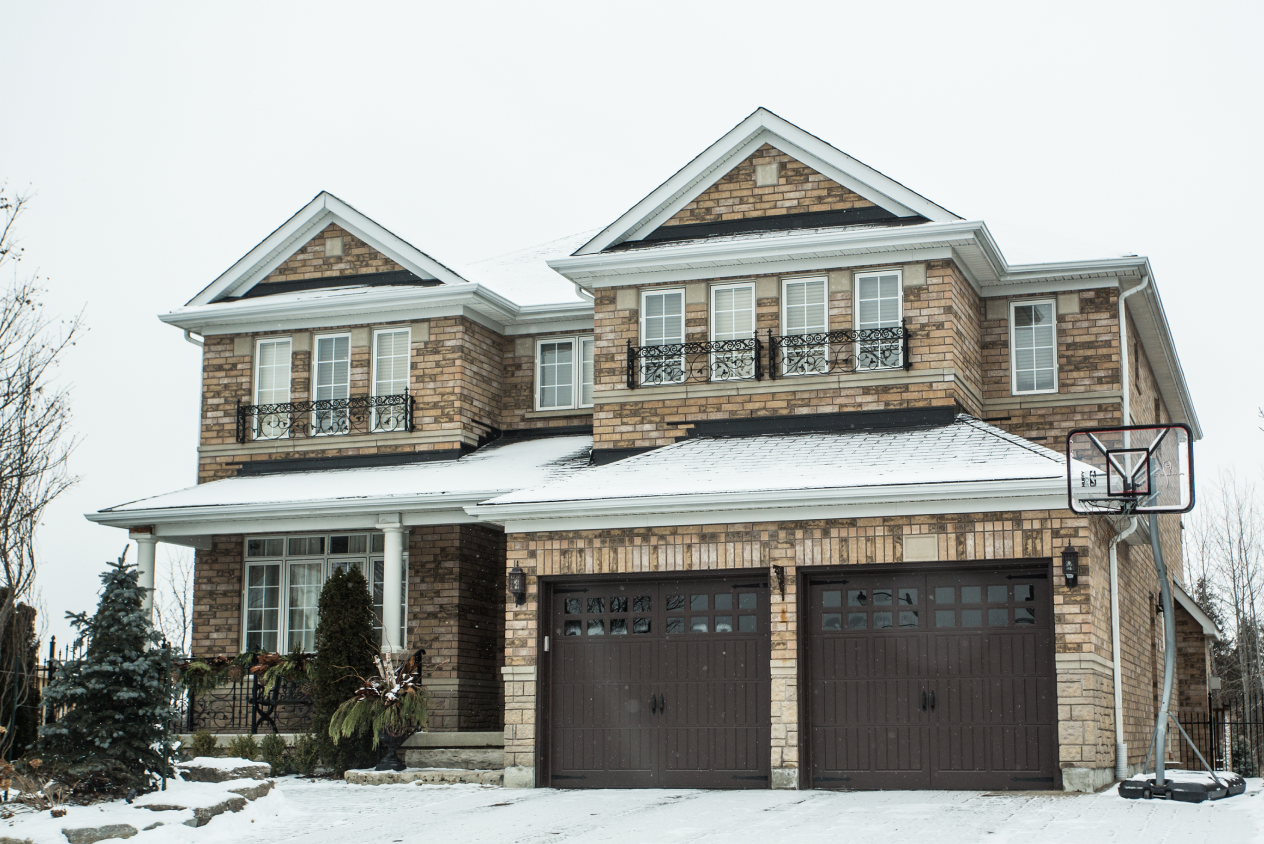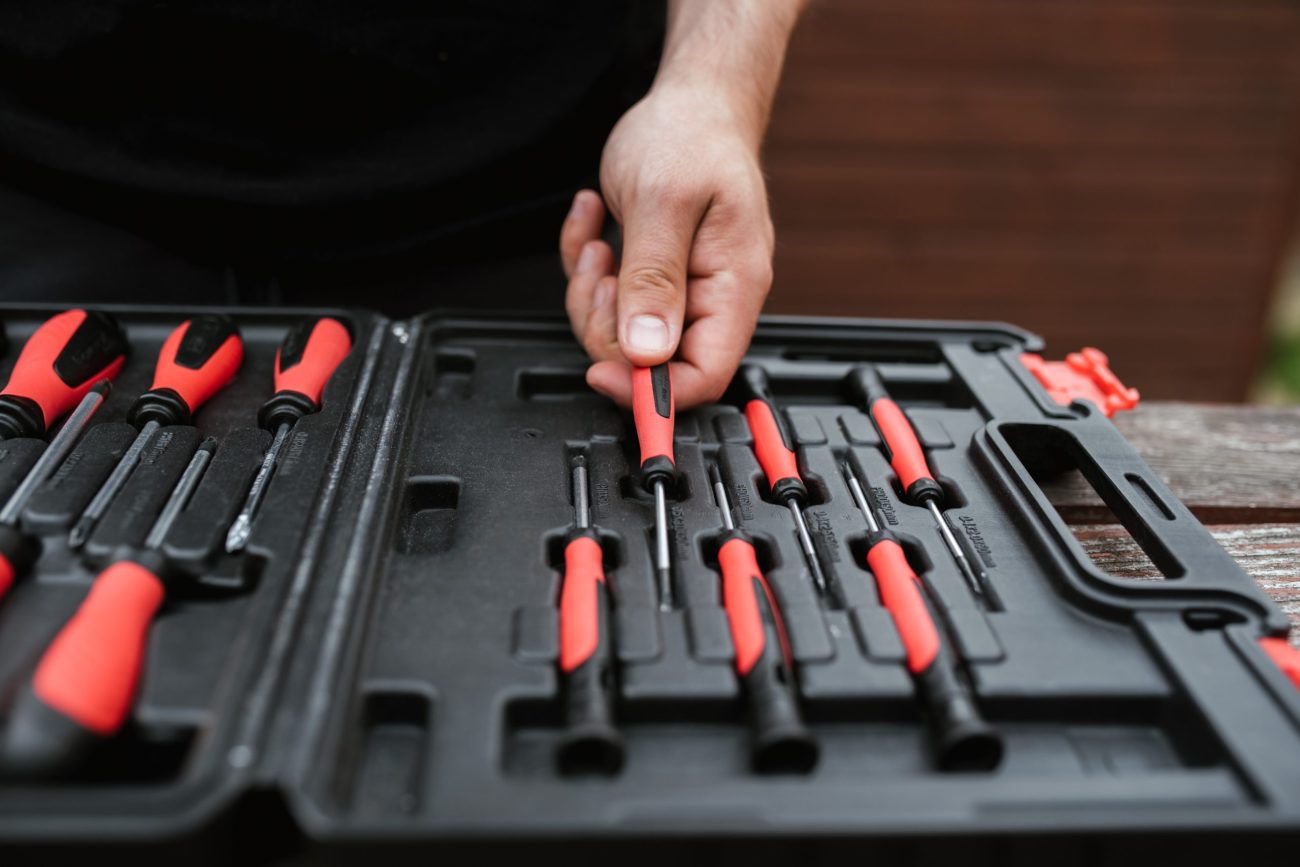Canadian winters tend to sneak up on us. By late September there’s a chill in the air and just two months later, the sidewalks are slippery with ice and snow. Winter in most parts of Canada is unpredictable, so it’s important to prepare your home for whatever season woes are ahead. Properly winterize your property and you’ll be set for a safe and comfortable season — and save money and time, too.
What does it mean to winterize a home?
Winterizing a home includes anything you do to prepare your home for cold weather. Challenging winter elements can compromise the security or comfort of your home or drive up your heating bills unnecessarily. Ice, snow, and wind can cause damage or topple trees. Flooding can occur when snow or ice thaws and doesn’t have the right channels to drain. Pipes can burst when freezing water expands with lower temperatures. Winterizing a home is a preventative measure to prepare your home for winter, protect your home from damage, save on heating bills and keep you cozy all winter long.
Important tips to prepare your home for winter
Use these helpful tips to prepare your home for the winter ahead. Bad at remembering? Useful apps like Garbageday can give you seasonal alerts that remind you when it’s time to clean eavestroughs or change your air filter.
Avoid air leaks
Sealing air leaks in your home can save you more than 20% on heating and cooling bills. Just like a hole in a boat causes flooding, air leaks can allow in cold air increasing your costs and your discomfort during the coming winter. Caulking and weatherstripping are two simple ways to prevent air leaks. Walk around your home and survey the outside and indoors to look for spots where cold air or condensation might sneak in.
Caulking seals air leaks and prevents water damage along cracks or gaps in your home.
Weatherstripping similarly prevents air leaks, but specifically seals moving parts like doors and windows.
Sealing air leaks may include:
- Weatherstripping doors and windows throughout your home.
- Adding weatherstripping on porches, patios, or sunrooms, especially where snow can accumulate and lean against your house.
- Insulate and seal leaks in easily forgotten areas like attics and closets with weatherstripping.
- Caulking around electrical wiring holes, plumbing fixtures and taps, and any other places where cold air can sneak in.
Clean your eavestroughs
The autumn months clog most eavestroughs with colourful leaves, which can easily build up if they’re not cleared out by late fall. Once these piles of leaves freeze, they can cause damage to eavestroughs. When ice thaws in the spring or because of a temporary rise in temperature, blockages can restrict the flow of water, causing ice damming. Blocked eavestroughs can also break or snap off, resulting in costly repairs.
What is ice damming?
Ice damming refers to the raised edge of ice or snow on a rooftop that keeps melting ice or snow from draining off of the roof. If water can’t drain from the roof, it puts pressure on the structure of your home and can cause flooding or leaking when temperatures rise. You can regularly look out for ice dams in the winter too; often they show up with those long dangly icicles dangling from an eavestrough, or a part of the roof where you can see ice buildup.
Yard prep and landscaping
Walk around your property and notice any trees, branches, or structures that don’t seem solid. Branches or trees that are leaning or are too close to the sides of your home can be prone to break or cause trouble if a winter storm closes in. A load of heavy snow can also weigh down branches. Take time to trim or cut back any branches that are close to your home, parking spot, or walking paths.
What about leaves?
Whether or not to rake your leaves has become a controversial topic in recent years. You’ll need to clear away weeds and layers of leaves, but don’t leave your lawn bare. Heavy blankets of leaves don’t let your lawn breathe, but leaf cover can also be a nutritious source of food for your lawn. Leave a light layer of leaves to protect young trees and shrubs, or even better, use your leaves as mulch. Mow the lawn –– and the leaves –– in the fall to break them down, and you’ve just scored yourself some free compost to generate spring lawn growth. Research shows that mowed leaves let the lawn underneath breathe and properly digest all the nutrients as they decompose.
Gardening
Prepare your garden for fall by pruning and planting. With a bit of forethought you can look forward to fresh blooms in early spring. Get rid of any weed stragglers and plan your spring garden. Each province has a different ideal time for fall planting, but in general fall is a great time to plant shrubs, perennials, and trees.
Store outdoor items
It’s time to put away the lawnmower and take out the snowblower. Early fall is a great time to clean out your garage and maximize storage. Get rid of unnecessary clutter so you can easily park your car, put spring and summer items like kiddie pools and bodyboards in storage, and make sure shovels, sleds, and any winter items are easily accessible. This is a great time to purge as well. If there are spring or summer items you didn’t use all summer, consider donating them to free up space.
Use salt wisely
Salt has been commonly used to help make sidewalks less slippery or to navigate the front stairs when they’re covered in ice. But salt can kill grass and foliage, resulting in a brown, dead lawn in the spring. Salt can also cause damage to waterways and pavement and can damage your pet’s feet. Consider buying an eco-friendly melting agent to protect your property, grass, and walkways. Natural salt is better for your lawn and pavement, and it’s better for the environment too. Avoid salt and chloride where possible, even if the brand suggests it’s safe for pets.
Check out and stock up on winterizing products
- Make sure you’ve got a sturdy shovel, a good set of waterproof winter gloves, and the equipment you’ll need to clear ice off car windows if you live in a province with cold winters. Even with a good snowblower, you’ll need a great shovel to clear steps and sidewalks. Leave a little basket by the door with a warm hat, gloves, and thick socks to make winter mornings easier.
- Check on your generator, or invest in a portable generator if you don’t have one yet. You’ll want to test it out every few months and have it regularly serviced.
- Test out your snowblower to make sure it has enough fuel or motor oil, and clean it off so you don’t have to do so in freezing weather. You tune up your bike in the spring, and in the same way it’s wise to get your snowblower checked out, especially if it’s an older model. This usually costs anywhere from $50-$200.
Don’t forget the attic
Heat loss from the attic in your home can account for 40 percent of your winter heating bill. It might cost you up front to insulate or winterize your attic, but doing so can save you money in the winters ahead. Make sure you hire a well-reviewed contractor to insulate your attic; poorly installed insulation baffles can cause mould or other issues when the weather warms up. Consider mouse repellent alarms if you tend to have critters sneaking in when it gets cold out.
Prevent frozen drains and pipes
Water damage caused by burst pipes can be costly and dangerous. Get any needed repairs done before it gets cold. In the colder months, pipes can break or burst when frozen water expands. Dropping water pressure is a clue that your pipes might be freezing, so make note of pressure changes in the winter. Here’s how you can avoid frozen pipes or drains in your home.
- Drain and turn off outdoor water lines before the cold weather hits to prevent freezing or damage.
- Insulate water pipes in unheated areas of the house like the garage, backhouse, and attic. This can also cut down your heating bill.
- Keep a tap dripping a tiny bit if the weather drops far below zero.
- Increase indoor circulation. Keep doors inside your home and between bedrooms open, and outdoor and garage doors sealed and closed.
- Plan ahead if you’re travelling. Before you leave for a winter getaway, make sure you turn on the water main to drain all pipes, drain your hot water tank, unhook your washing machine hoses, open kitchen and cabinet doors to increase air circulation, and keep heating set to a moderate temperature to avoid freezing. Ask a friend to check on your house while you’re away.
- Make sure everyone in the home knows where the water shut-off valve is in case of flooding. In Canada this is usually in the basement of your home. If you’re leaving home, make sure your neighbour or a trusted house sitter knows where it is in an emergency.
Safety check
This is a great time to check on your carbon monoxide and smoke detectors, changing batteries if required. Put together an emergency kit with extra batteries, a first-aid kit, and flashlights in case of an emergency. Stock up on some non-perishable foods and bottled water in case of a surprise winter storm. Get to know your neighbours, too. Having their phone numbers on hand can be a lifesaver in a crisis.
Avoid fires
It might not be instinctual to worry about a fire in the colder months, but in cold weather we like to light fires and use constant heat sources to keep our bodies warm. Regularly check that stovetops are switched off, fires are properly snuffed out, and heat sources are far away from furniture or clutter. Clothing dryers are a surprisingly common source of fires, so make sure you’re cleaning out that little lint drawer and remind everyone in your home to do the same. Have a specialist inspect your dryer and washer every few years to make sure they’re operating well.
Winterize your home’s systems
Winterizing and checking your home’s systems should happen well before winter. Early October is a great time to test and prepare your home for winter to make sure you’re ready for freezing weather.
Air conditioning
Most air conditioning systems have an outdoor condensing unit which can easily freeze or rust if not properly maintained. Get your system serviced or clean it thoroughly yourself. Clean off the fan blades of your outdoor condensing unit with a strong spray from a hose, washing away any leaves, dirt, debris, or buildup. Let the unit dry properly before covering it with a breathable waterproof cover. A restrictive sealed cover can cause rust and internal moisture so make sure you buy a cover that allows for airflow.
If you use a window air conditioning system, remove it from the window to avoid cold air leaks or seal it properly, closing and sealing vents for the winter. Cover the outdoor part of the air conditioner with a similar breathable, waterproof cover. If you’re storing it inside, store it upright and not sideways.
Pools
We know it’s hard to admit when pool season is over, but there are plenty of fall joys ahead. Clean the pool thoroughly and cover with a waterproof cover that can sustain whatever winter in your province looks like. In Alberta you might want a stronger cover to withstand hail, and in Vancouver you can expect a heavier rainfall. If it’s your first season living here, ask any neighbours what they use for their pools. Pool supply lines can freeze and cause damage, so if you’re not sure how to properly drain them it’s smart to hire a professional to prep your pool for winter.
Sprinklers
Make sure there isn’t water left in hoses, sprinklers, or outdoor water systems. By draining them properly you’ll make sure they don’t freeze or crack when it gets cold. Shut off your lawn and garden irrigation, including any timers, well before the winter to avoid freezing. Insulate exposed pipes or valves that will be vulnerable to the cold. Coil any drained hoses and bring them inside for storage.
Energy efficiency in winter
In a cold climate, bills can add up. Heating a home, hot water, and energy costs can be pricey. An energy efficient home can help you prepare your home for winter and save money at the same time.
- Programmable thermostats can sense and regulate the temperature of your home, saving on heating costs. Preprogram your thermostat to a lower temperature while you’re out for the day so you’re not unnecessarily using heat.
- We’re not the only ones who benefit from a cozy blanket in the winter season. Water heater blankets help lock in the heat around your hot water heater, preventing wasted energy. Even pricier water heater blankets should pay back their cost in energy savings over one winter season, so they’re a worthwhile investment.
- If you have a working fireplace, using it regularly could save you money on heating costs. Stock up on firewood in early fall and store it loosely in pallets or risers off the earth to avoid mold or fungus growth. If you’re using your fireplace for the first time this season, get it professionally cleaned by a chimney sweep to avoid fire hazards or unpleasant waves of smoke indoors. Make sure you have sufficient circulation to let heat move through the home. Some furnaces have small fans you can perch on top of the fire source which do an impressive job of spreading heat around.
Refresh your home for fall
Aside from all of the necessary prep, autumn is also a great time to make the interior of your home feel warm and friendly for the approaching winter. Introduce a basket of warm blankets, stock up on teas and soups, and bring out decorative doormats and racks for wet boots and coats. If you’re looking to do minor renovations, this could be a good time to hire a contractor since the summer rush is over and the freezing weather hasn’t set in yet. Many professionals will be done with their big summer projects so maybe this is the time to install that clawfoot tub you’ve been dreaming about. The winter blues can also surface as a long Canadian winter sets in, so consider lush indoor plants, maximizing sources of sunlight, and making sure your indoor lamps are warm and cheery. Clear room for an indoor gym or creative space if possible to make it easier to do the things that make you feel good all year long.
Want more tips for buying and enjoying a home?
Houseful provides personalized guidance for your real estate journey. Personalize your search by selecting the home features most important to you. Our dedicated team of experts offer support from initial planning through to moving day, and our blog is full of articles to help you plan.
Start your home search with Houseful.
Find more information on how to buy a home, how to sell your home, and mortgage and finance tips, see our Home Journey How-To’s or sign up at houseful.ca.
This article offers general information only and is not intended as legal, financial or other professional advice. A professional advisor should be consulted regarding your specific situation. While the information presented is believed to be factual and current, its accuracy is not guaranteed and it should not be regarded as a complete analysis of the subjects discussed. All expressions of opinion reflect the judgment of the author(s) as of the date of publication and are subject to change. No endorsement of any third parties or their advice, opinions, information, products or services is expressly given or implied by Royal Bank of Canada or its affiliates.
Browse the newest listings in your area
OJOHome Canada Ltd. (“Houseful”) is a wholly-owned subsidiary of Royal Bank of Canada
20 King Street West, 8th Floor
Toronto, ON, Canada, M5H 1C4
833-709-1946
IDX information is provided exclusively for consumers’ personal, non-commercial use and that it may not be used for any purpose other than to identify prospective properties consumers may be interested in purchasing. Information deemed reliable but not guaranteed to be accurate. Listing information updated daily.
Houseful is committed to ensuring accessibility for individuals with disabilities. We are continuously working to improve the accessibility of our web experience for everyone. We welcome feedback and accommodation requests, please submit them here.
The trademarks REALTOR®, REALTORS®, and the REALTOR® logo are controlled by The Canadian Real Estate Association (CREA) and identify real estate professionals who are members of CREA. The trademarks, Multiple Listing Service® and the associated logos are owned by CREA and identify the quality of services provided by real estate professionals who are members of CREA. Used under license.
Please use the following address to send referral payments:
Lockbox: OJOHome Canada Ltd. PO Box 9479, Stn A, Toronto, ON M5W 4E1
Lockbox Number: T09479C
® / ™ Trademark(s) of Royal Bank of Canada. Used under licence.




